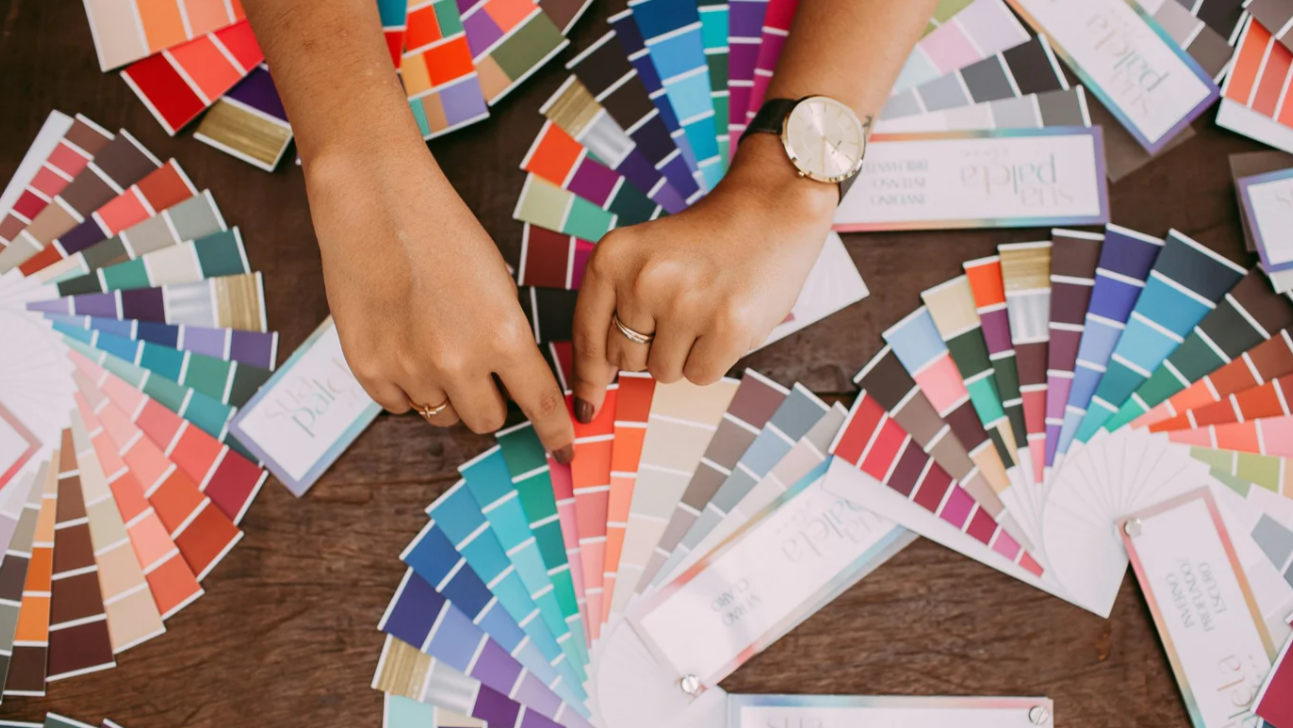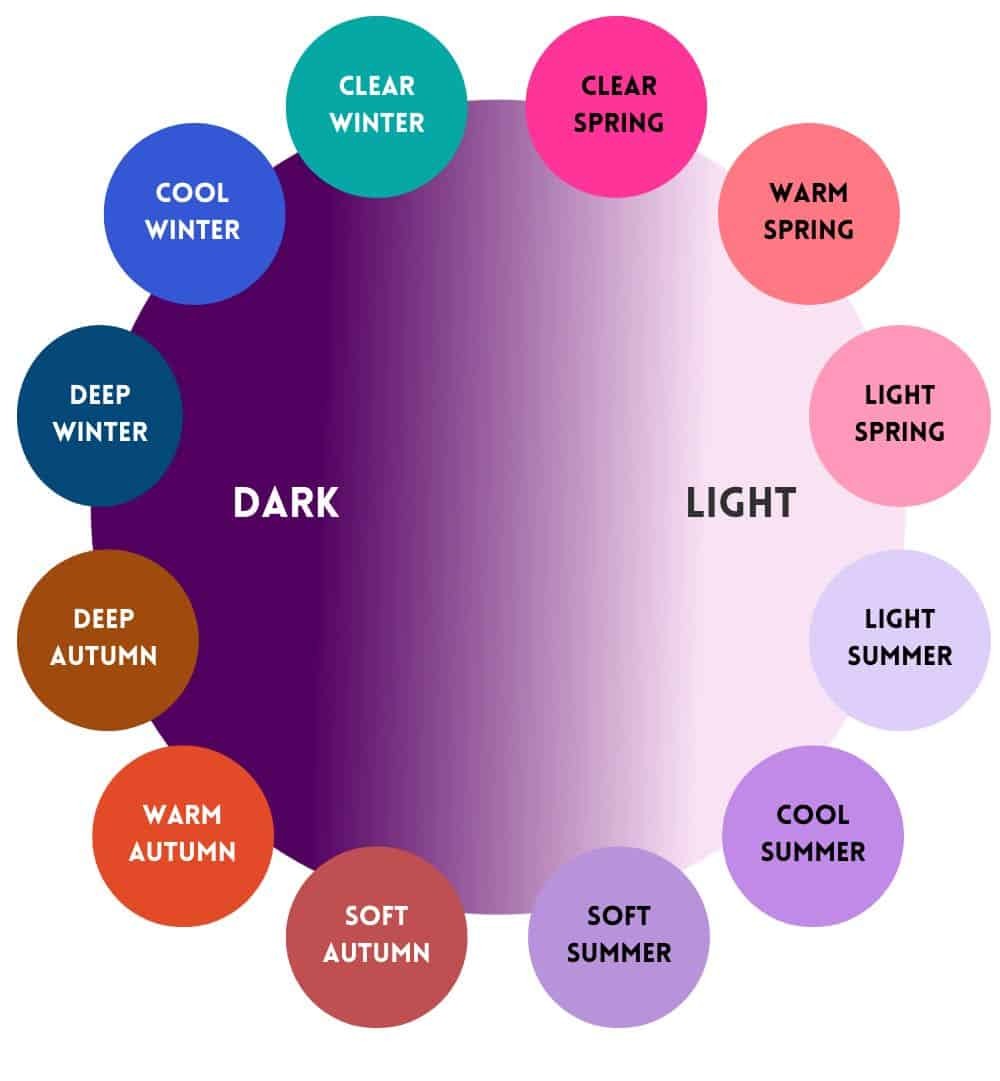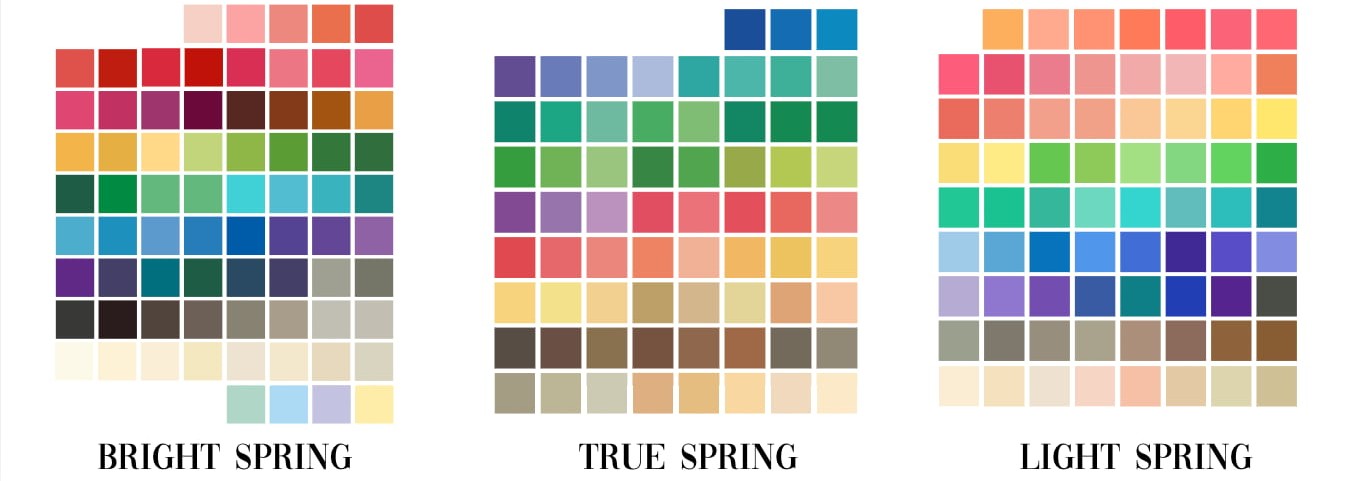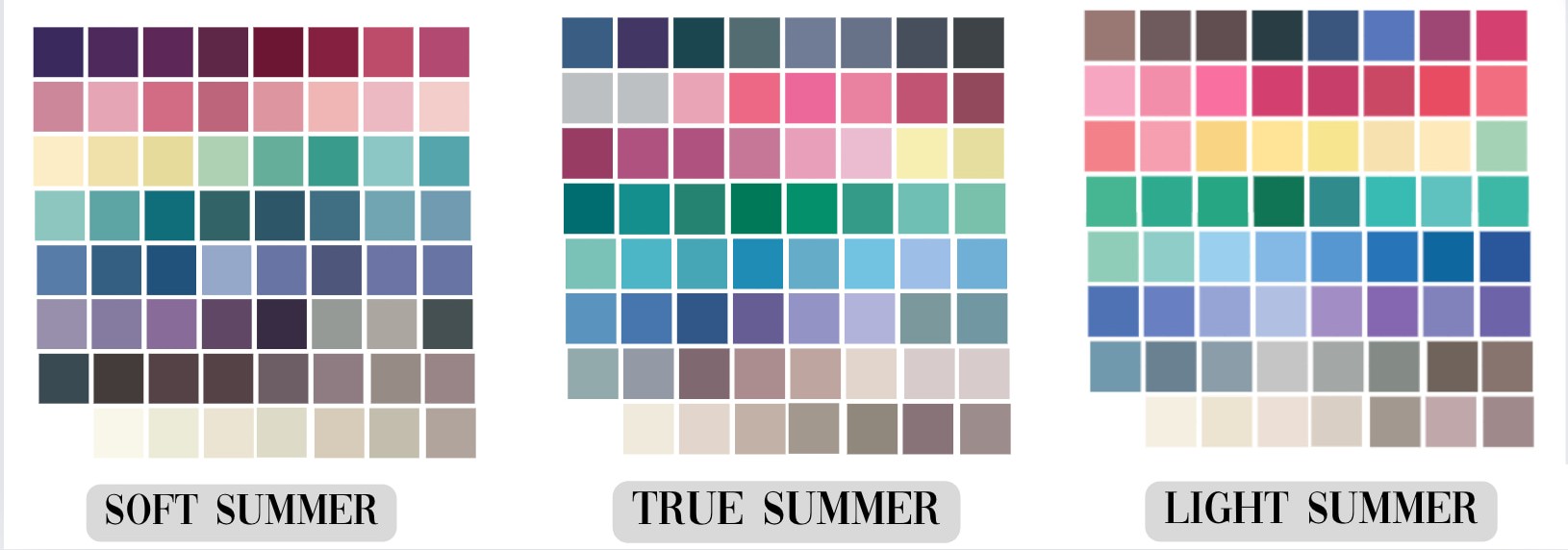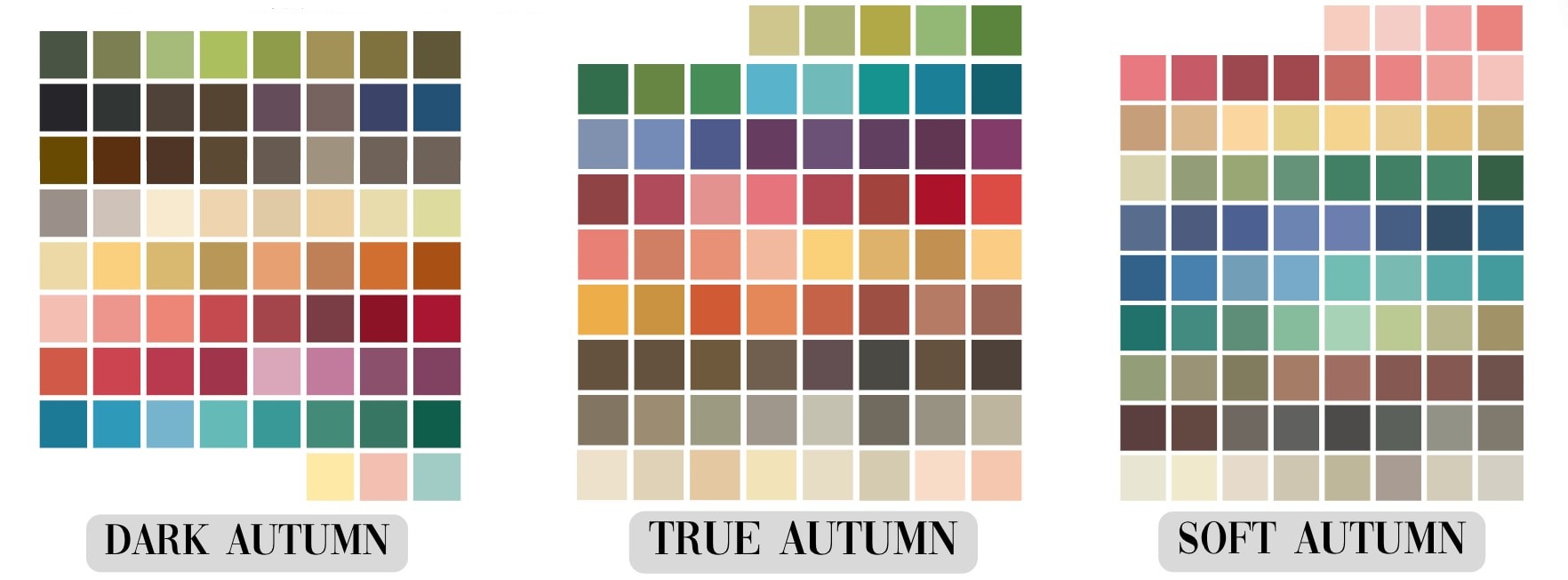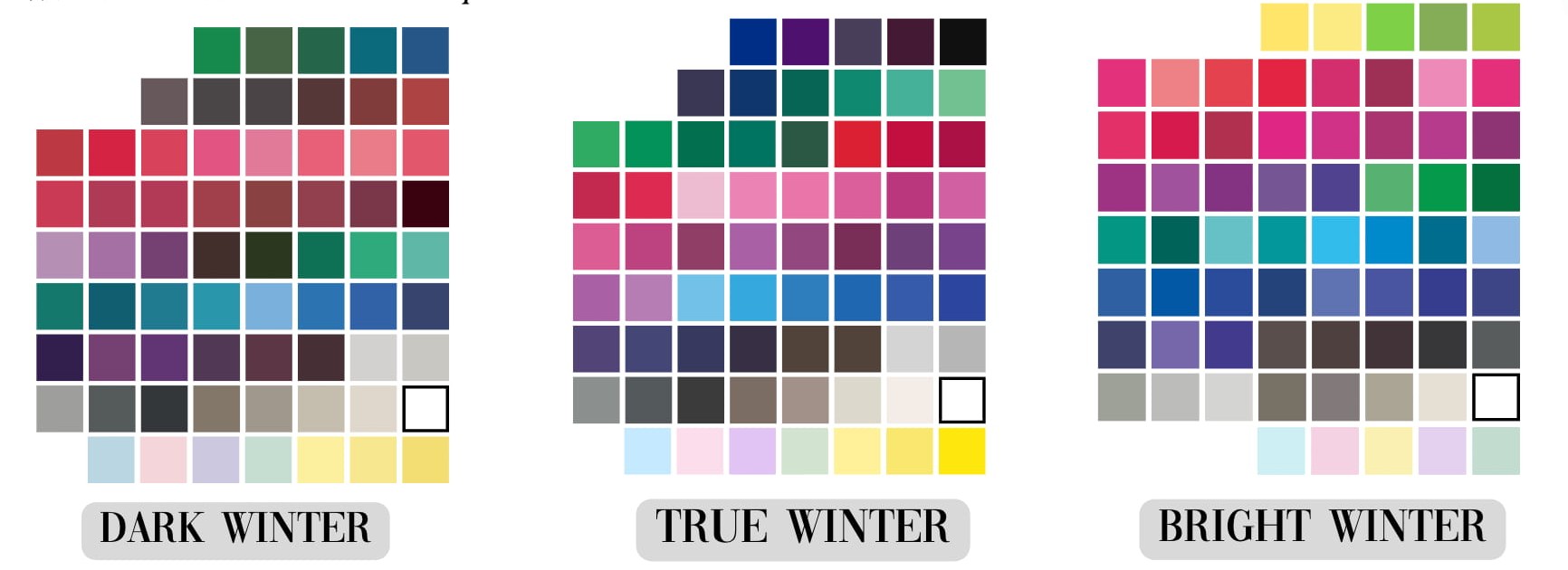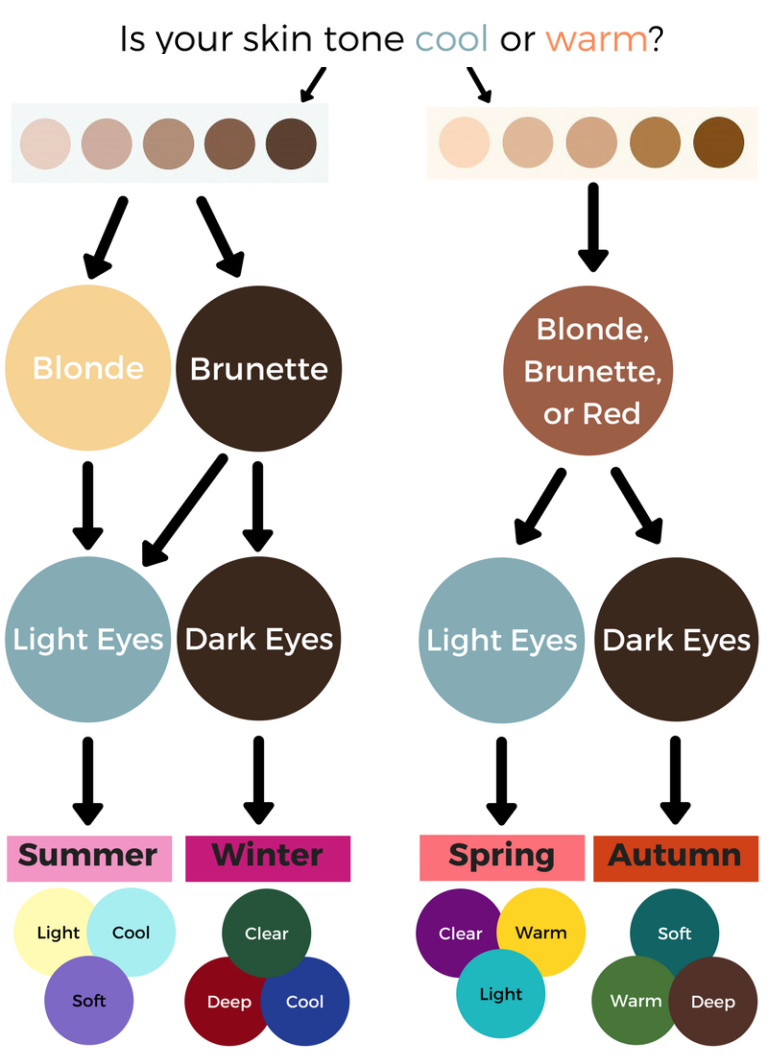Seasonal color analysis isn't just a trend—it's a personalized system designed to bring out your natural radiance using colors that harmonize with your undertone, contrast, and depth. The 12-season method takes the classic four-season concept and expands it into a more nuanced and inclusive approach to style.
Why 12 Seasons?
While the original system grouped people into Spring, Summer, Autumn, and Winter, the 12-season model introduces subtypes that account for variations in lightness, softness, brightness, and temperature. This allows for more accurate and flattering recommendations.
The Philosophy Behind Color Harmony
Color affects how we feel, how others perceive us, and how our features appear in various settings. Seasonal color analysis (SCA) emerged from the theory that individuals have inherent coloring based on their skin tone, eye color, and hair color, and that certain color palettes harmonize better with those features.
The original model, developed in the 1980s and inspired by Johannes Itten’s work on color theory, classified people into four seasonal groups—Spring, Summer, Autumn, and Winter. Over time, the system evolved into a 12-season framework to account for the complexity and variety of human coloring, allowing for more accurate, customized, and inclusive results.
The Science of Color: Hue, Chroma, and Value
Before diving into the seasonal breakdown, it’s important to understand the three core elements used in color classification:
- Hue: The temperature of the color — warm (yellow-based) or cool (blue-based).
- Chroma: The intensity or saturation — bright/clear or soft/muted.
- Value (Depth): The lightness or darkness of the color.
These three variables are combined to determine which colors bring out the best in your natural coloring. For example, someone with a cool undertone, low contrast, and soft features may look better in smoky mauves and gentle blues than in vibrant reds or stark blacks.
The Core Four Seasons
The foundation of seasonal color analysis is based on the four seasons. Each season is characterized by its temperature (warm or cool) and by the level of contrast and clarity found in its colors.
Spring
Spring individuals typically have a warm undertone, golden hair, and bright, clear eyes. Their best colors are warm, clear, and light — think of blooming flowers, fresh grass, and sunny skies.
Summer
Summers have cool undertones and are defined by softness and delicacy. Their palette includes dusty pastels, gentle blues, soft lavenders, and muted rose shades — cool but light and airy.
Autumn
Autumns are warm, rich, and earthy. Think of fall leaves, golden sunlight, and spicy tones. Hair and eyes tend to be deep and warm, and best colors are burnt oranges, olive greens, and chocolate browns.
Winter
Winters are cool and bold, with high contrast between skin, hair, and eyes. Their best colors are pure, icy, and dramatic — think jet black, cobalt blue, true red, and crisp white.
The Seasonal Groups & Subtypes
Each core season—Spring, Summer, Autumn, and Winter—has three variations. These are determined by three major traits: hue (warm or cool), chroma (bright or muted), and value/depth (light or dark).
SPRING: Warm, Bright, and Energizing
- Light Spring: Looks great in peach, mint, and light yellow.
- Warm (True) Spring: Best in coral, cream, grass green, and salmon.
- Bright Spring: High contrast with warmth. Shines in turquoise, bright pink, and clear tomato red.
SUMMER: Cool, Soft, and Muted
- Light Summer: Best colors are lavender, soft pink, and powder blue.
- Cool (True) Summer: Icy pastels, cool navy, and dusty rose are ideal.
- Soft Summer: Suits mauve, sage, smoky teal, and soft gray-blue.
AUTUMN: Warm, Rich, and Earthy
- Soft Autumn: Looks great in camel, olive, and warm taupe.
- Warm (True) Autumn: Best in mustard, terracotta, moss green, and rust.
- Deep Autumn: Forest green, burgundy, espresso, and aubergine suit best.
WINTER: Cool, High Contrast, and Bold
- Deep Winter: Cool undertones with dark features. Black, deep emerald, and fuchsia work well.
- Cool (True) Winter: Pure cool tones and high contrast. Best in white, royal blue, cherry red.
- Bright Winter: Crisp cool contrast. Thrives in icy brights like neon pink, electric blue, and crisp black and white.
How to Determine Your Season
There are a few ways to identify your seasonal type:
- Self-analysis: Use a white background, observe your natural features in daylight. Try draping different colors around your face and see which shades make you look fresher, brighter, and more rested.
- Drape test kits: Purchase seasonal color drape sets or swatches to help you evaluate at home.
- Professional consultation: A certified color analyst will evaluate your undertones and contrast to determine your season.
- AI or app-based tools: Apps and AI image analyzers can assess your features and recommend your season based on trained models.
Using Your Palette in Everyday Life
Knowing your color season isn't just for wardrobe planning — it can be used in all aspects of visual identity.
- Shopping: Save time and avoid returns by focusing on your palette. Filter clothing by tone, and invest in pieces that harmonize naturally.
- Makeup: Choose lipstick, blush, and eyeshadow shades that suit your season. For example, Bright Winters do best with bold lips, while Soft Summers shine with dusty pinks and mauves.
- Hair color: Avoid brassy or cool tones that clash with your natural coloring. A Deep Autumn, for instance, will thrive with rich espresso or chestnut brown over ashy blondes.
- Branding and design: Your palette can influence your personal brand. Create visual consistency in your Instagram feed, website, or business cards by using your seasonal colors.
- Wardrobe coordination: Building a capsule wardrobe using your seasonal colors ensures all pieces mix and match effortlessly.
Seasonal color analysis isn't about limitation—it's about empowerment. Understanding your natural coloring helps you align your wardrobe and makeup with who you are, reducing decision fatigue and enhancing your confidence. Whether you identify with the warm optimism of Spring or the bold elegance of Winter, there’s a palette tailored to your essence.
As you explore seasonal color theory, remember: it's a guide, not a rulebook. The best style is the one that makes you feel authentically you.
